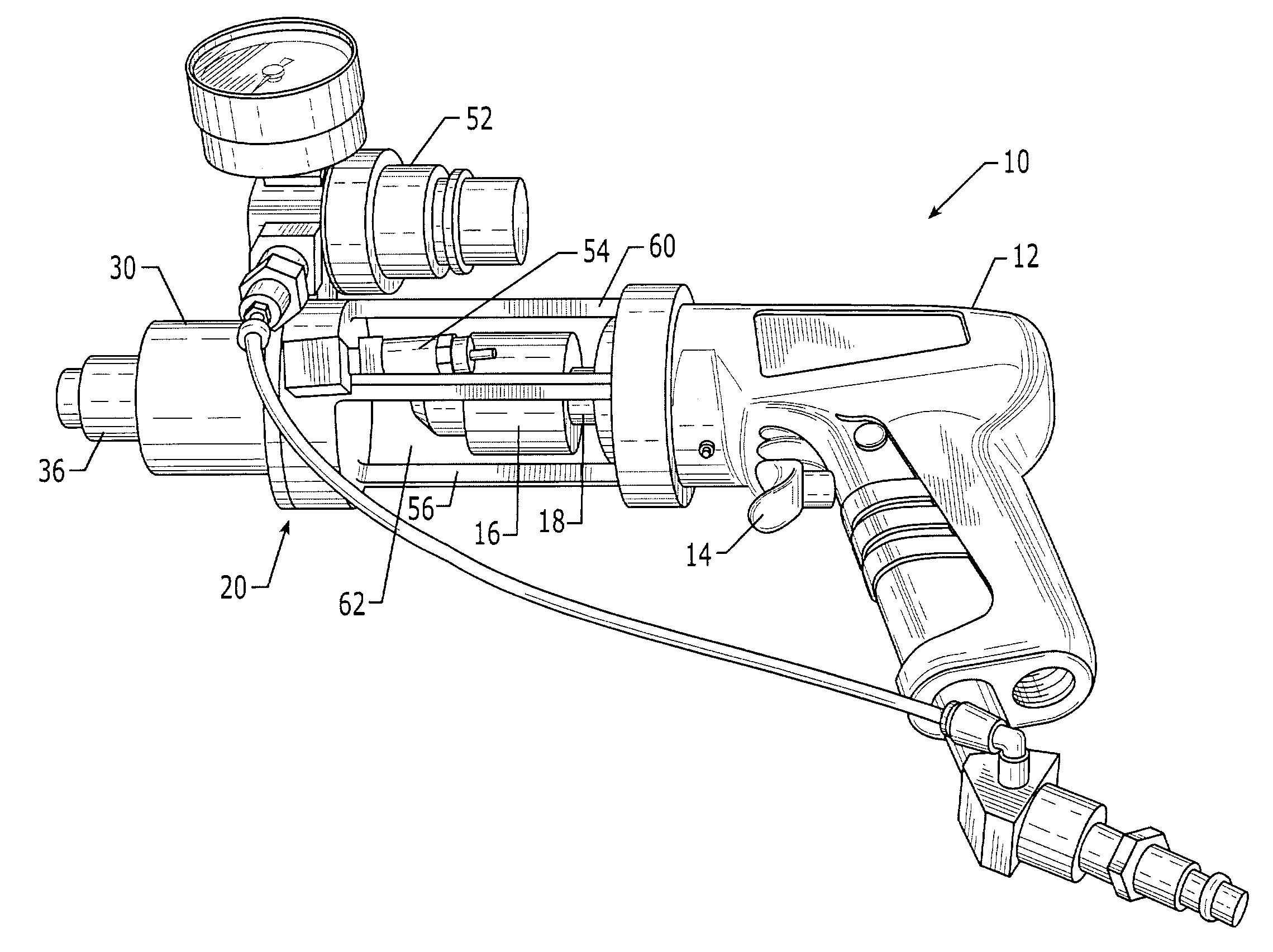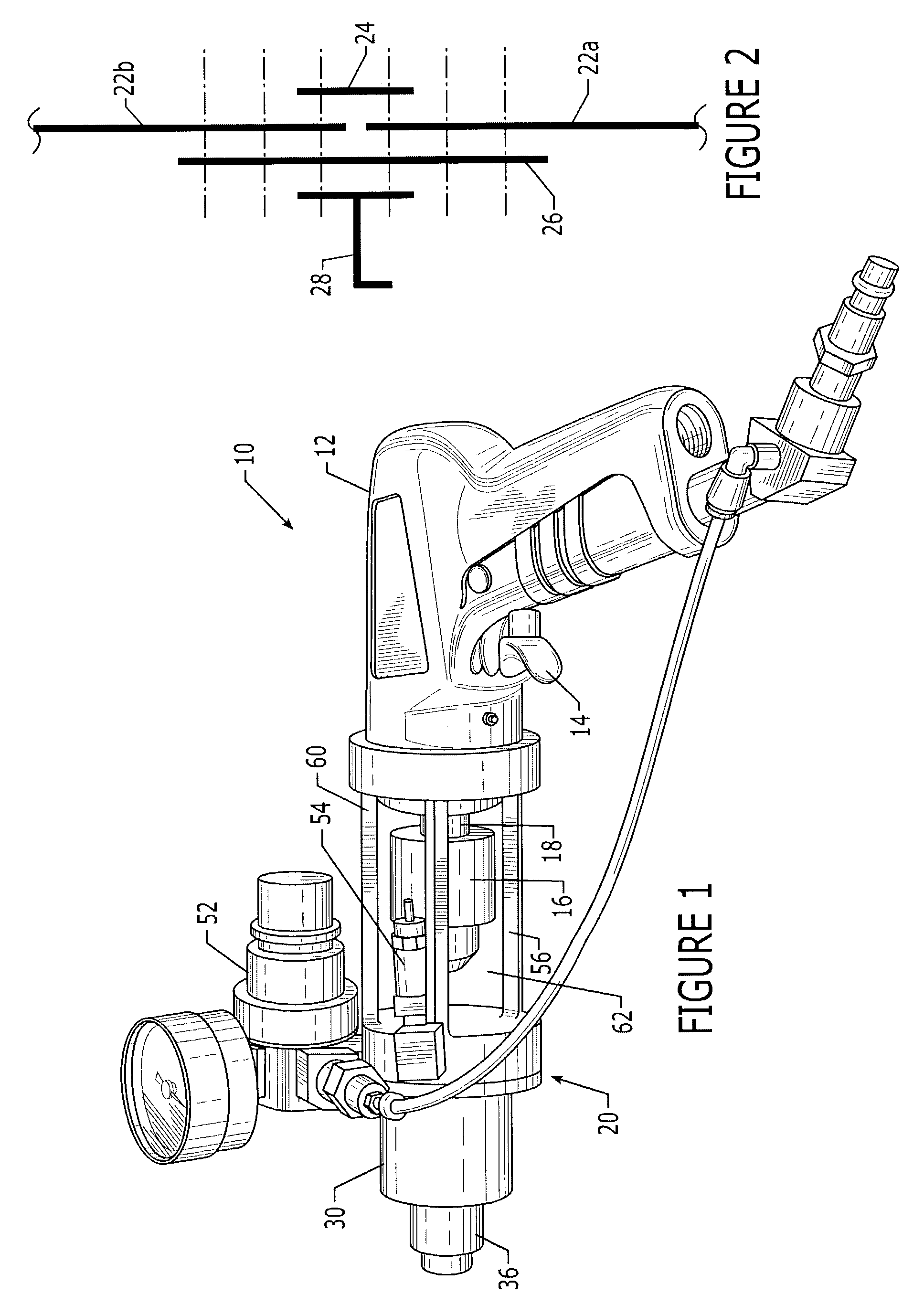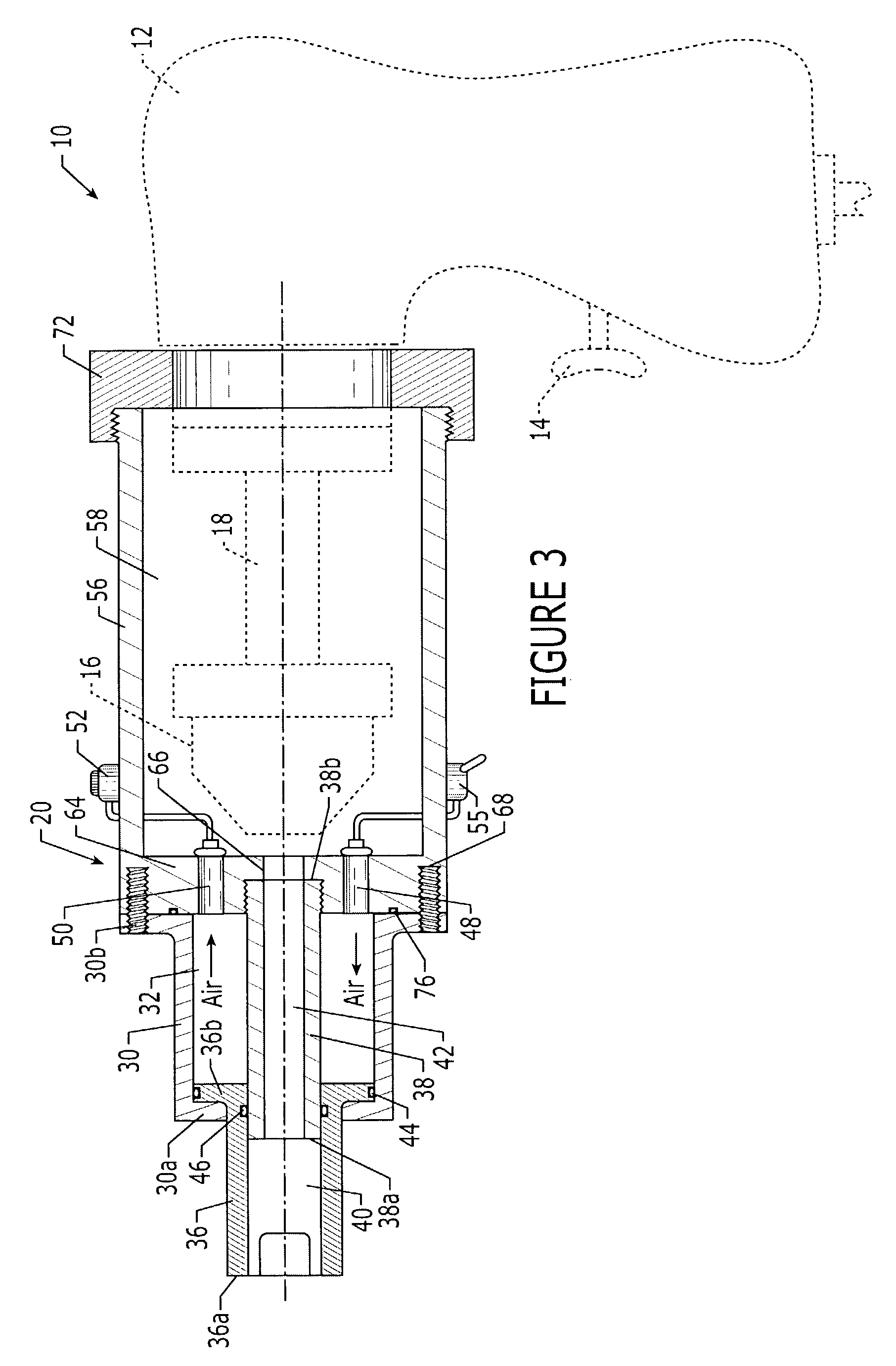[0006]An improved bushing as well as a drill incorporating the bushing are provided according to the present invention. The bushing is adapted to be biased into contact with the surface of a structure, such as a multi-layer or laminate structure, and to permit force to be applied to the structure which will reduce, if not eliminate, any gaps existing within the structure and which will reduce, if not eliminate, the likelihood of additional gaps forming during the process of drilling a hole through the structure. Thus, the bushing and associated drill of the present invention advantageously reduce the formation of inter-laminar burrs and the introduction and migration of chips within gaps within a structure, including a multi-layer structure. As such, a drill incorporating the bushing of the present invention may form holes in a structure, such as a multi-layer structure, without having to subsequently disassemble and clean the components of the structure in order to remove the inter-laminar burrs and chips prior to installation of the fasteners, thereby increasing the speed with which fasteners may be installed in various structures and, in particular, multi-layer or laminate structures, and correspondingly reducing the
assembly costs associated therewith.
[0009]By being urged into contact with a structure in which a hole is be formed, the bushing applies a force to the structure in which the hole is to be formed. In instances in which the structure in which the hole is to be formed has multiple
layers, the force may cause the multiple
layers to be pressed together, thereby advantageously reducing, if not eliminating, any gaps that may exist between the layers. During the subsequent drilling operation, the force applied by the pneumatically actuated bushing of present invention may be maintained so that the inter-laminar burrs otherwise created during the drilling process are reduced, if not eliminated, and the chips that are introduced into gaps between the layers of the structure are correspondingly reduced, if not eliminated. As such, the multi-layer or laminar structure advantageously need not be disassembled, cleaned and reassembled following the drilling process and prior to installation of a
fastener or the like through the holes formed in the structure, as required by at least some conventional drilling processes.
[0010]According to one advantageous embodiment, the bushing is not only capable of being pneumatically actuated, but may also be reconfigured utilizing the same components, i.e., the housing, the nose piece and the gas inlet, so as to permit spring actuation, if desired. In this embodiment, the re-configurable bushing also includes a mounting mechanism for releasably attaching the housing to a drill motor. The mounting mechanism permits the housing to be detached from the drill motor so as to access the rear portion of the
internal cavity. According to this embodiment, the rear portion of the internal cavity is sized to receive a spring, such as a cylindrical or a conical spring, that will bias the nose piece forwardly relative to the housing. The re-configurable bushing of this embodiment therefore permits the nose piece to be alternately actuated pneumatically by gas introduced into the rear portion of the internal cavity via the gas inlet and mechanically by a spring disposed in the rear portion of the internal cavity, or by combination of pneumatic and spring actuation.
[0012]The bushing may also include a guide member extending lengthwise through the housing. The guide member has a forward end exposed within a passage defined by the nose piece. In this regard, the guide member and the passage defined by the nose piece may be sized such that the guide member is snugly disposed within the passage defined by the nose piece. The guide member is advantageously fixed in position relative to the housing, such as by being attached to the support structure. To facilitate the slidable movement of the nose piece relative to the housing and to facilitate the pneumatic actuation of the nose piece by limiting the air that escapes from the rear portion of the internal cavity, other than the air that is extracted via a gas outlet, the bushing may also include a first seal between the nose piece and the housing and a second seal between the guide member and the nose piece. The rear portion of the nose piece is generally annular and, in those embodiments that include a guide member, the annular rear portion of the nose piece advantageously extends from the guide member to the housing to divide the internal cavity into forward and rear portions, thereby further facilitating the pneumatic actuation of the nose piece.
[0013]In addition to the bushing, a drill including the bushing of the present invention is also provided according to another aspect of the present invention. The drill further includes a drill motor, and a chuck for engaging a tool, such as a
drill bit, that is operatively connected to the drill motor. The drill motor may be pneumatically actuated, and, as such, a common
gas supply may be utilized to supply gas, such as shop-air, to both the drill motor and the gas inlet of the bushing to facilitate pneumatic actuation of the bushing. In order to regulate the pressure within the rear portion of the internal cavity, the drill may include a
regulator in fluid communication with the gas outlet or inlet. Accordingly, the nose piece may be urged forwardly relative to the housing and into contact with the structure in which a hole is to be formed in order to reduce gaps within a multi-layer structure and, consequently, to reduce, if not eliminate, inter-laminar burrs and
chip migration through gaps within the structure. As a result of the
reconfigurability of the bushing, the bushing may advantageously be activated either pneumatically or, in instances in which a spring is disposed within the rear portion of the internal cavity defined by the housing, by spring actuation.
 Login to View More
Login to View More 


